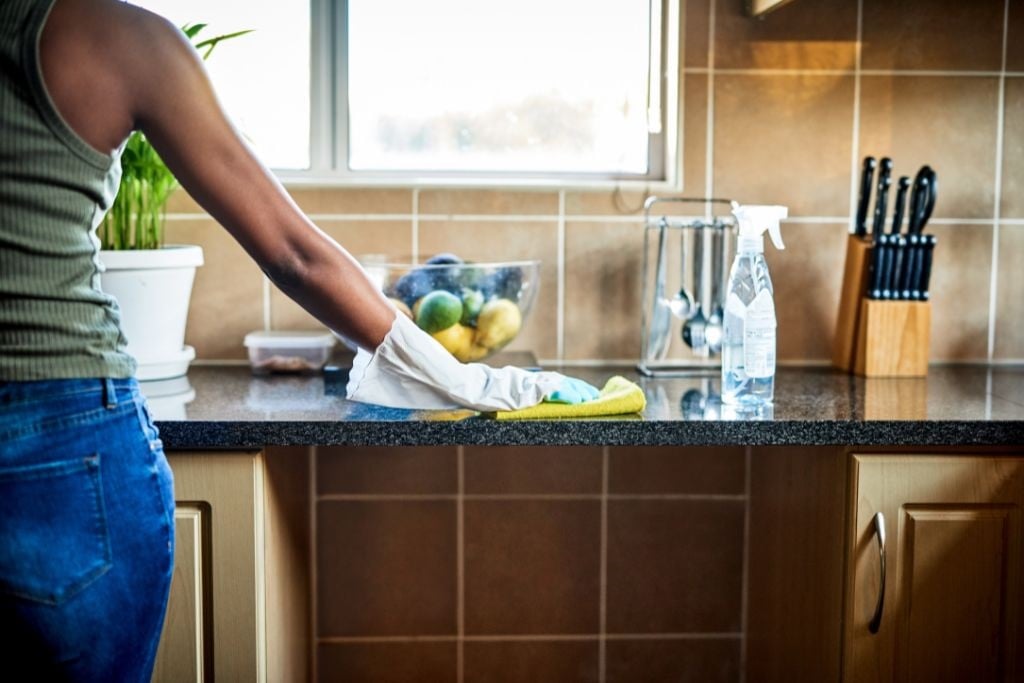Keeping your dishes clean and your kitchen bacteria-free requires a bit of elbow grease. (Charday Penn/Getty Images)
- Many of us think little about washing our dishes or whether they’re bacteria-free after a wash.
- Science shows that even after a wash, dishes may not be as clean as we assume due to bacteria and other germs that live in the tools we use for cleaning and drying our dishes.
- While dishwashers and their high temperatures are often the safer option for sanitising our dishes, there are ways to make hand washing safer, too.
The fact that germs live inside our favourite little dishwashing sponges is not new. Tiny compartments inside these sponges are the perfect breeding ground for E. coli and other germs that thrive in an intermediate number of compartments.
Research shows these germs can live inside the sponge for up to 16 days. Because of this, scientists have suggested that people replace sponges with brushes since lower bacterial levels were observed in used brushes than in sponges, and Salmonella also dies more rapidly in brushes than in sponges.
However, it’s important to note that the brushes should be replaced every three to six months.
While we’d love to believe that sponges are the only nasty buggers inside our kitchens, it turns out our sinks, dishcloths and cutting boards are also germ hoarders when not cleaned thoroughly.
A Verywell Health article shares that cleaning raw meat products, eggs, and fruits leaves our sinks cesspools of germs and bacteria. The same goes for cutting boards.
Regarding dishcloths, scientists believe it is better to let dishes air dry instead.
A study by the University of Mauritius found that bacteria such as E. coli, Enterococcus species and Staphylococcus aureus thrive in wet dishcloths.
Staying bacteria safe
While hearing about all the bacteria breeding in your kitchen may make you want to get rid of everything and never step foot in there again, there’s no need for that drastic measure.
To ensure that you’re using clean sponges, you can disinfect them by washing them in hot, soapy water and then microwaving them while wet to avoid them catching fire – it is, however, important to note that some sponges have material in the scouring pad that’s not suitable for a microwave.
Experts also suggest discontinuing the sponge’s use after a week or so, depending on how often it is used.
Using chlorine and a scrubbing brush to clean your sink after use will also ensure it stays germ-free. Frequent washes (every second day) and ensuring they dry up afterwards are your best bet for dishcloths. These should be replaced every six to 12 months, depending on usage and quality.
It is also in your best interest to use different cutting boards for various food types—one strictly for cutting raw meat, poultry, and seafood and the other for ready-to-eat foods, such as bread and vegetables.
Both should be disinfected with hot, soapy water and a dash of chlorine and dried correctly afterwards. Experts also suggest you replace your cutting board yearly. Remember to thoroughly clean all kitchen surfaces before and after food preparation and wash your hands frequently.
